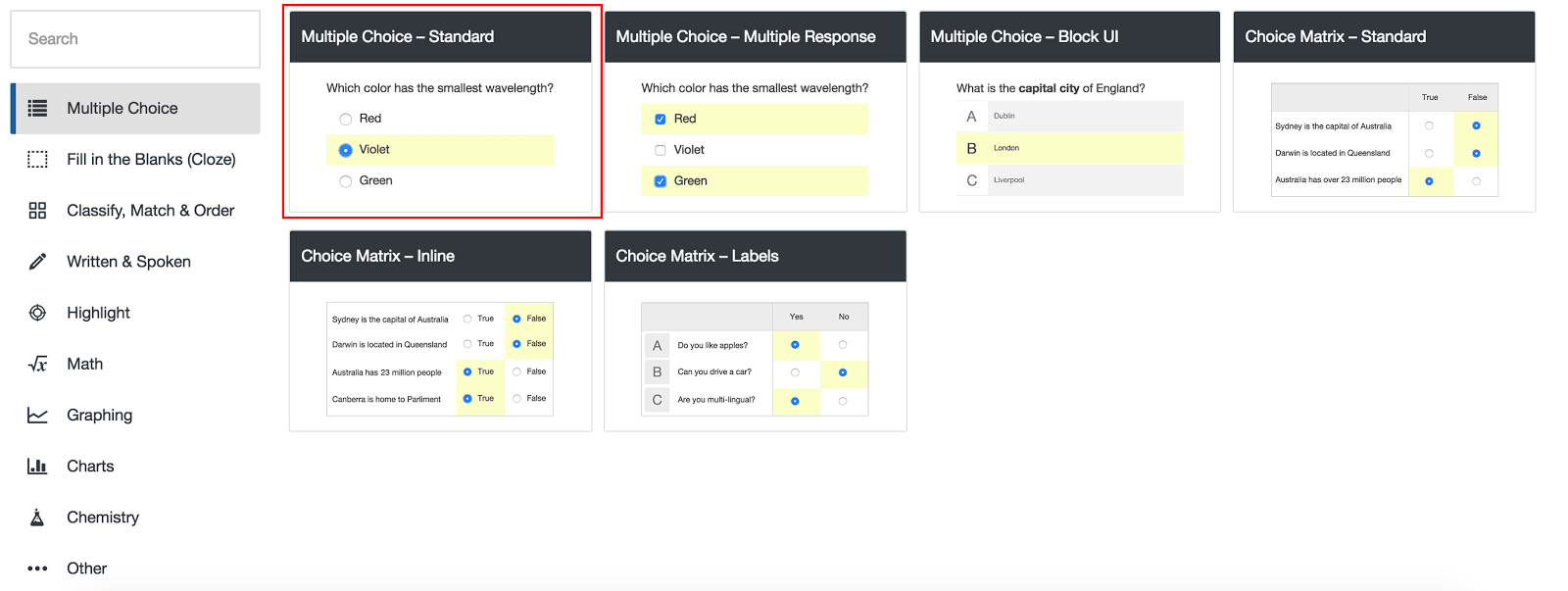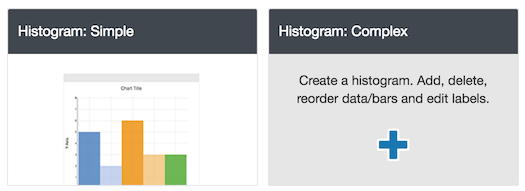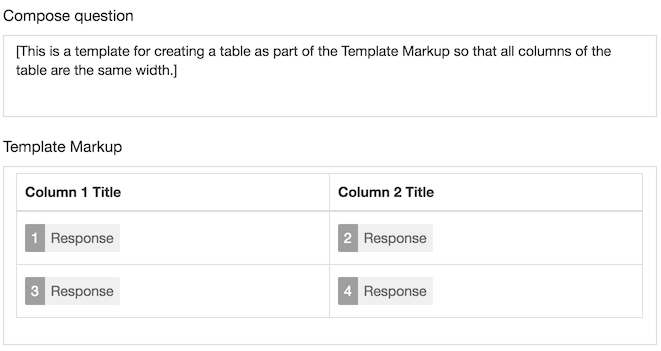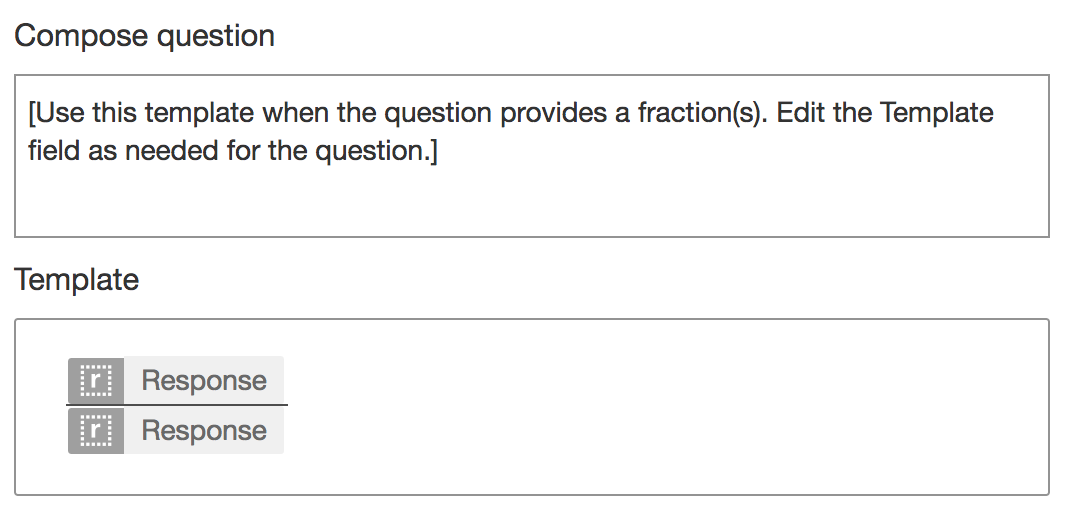OBSOLETE? Work With Custom Templates
ADAM offers more than 50 Question Types to suit our clients' various authoring needs, but we understand that your authoring process may be different - this is why we designed our products to be very flexible.
With our customisation options, you have full control over the look and feel of your Questions. You can select which templates you would like to make available for your authors, group them into custom categories, rename them, hide options, configure default text and images, and create a completely bespoke authoring environment.
In this article you will find a breakdown of elements that can be configured, as well as customization examples.
Author Site custom templates
If you wish to configure custom Question templates within the Author Site, contact ADAM support with the following details, and we will do the rest:
- A name for the template
- A thumbnail image for the template (optional)
- A short description of the template (optional)
- The Question JSON that you want to use as your template
- A list of options that you would like hidden from the UI of the template (optional)
- A custom group name/category for the template to appear in (optional)
Question templates tile view and side menu
You can freely change the list of templates that appear in the tile view (Figure 1). It is possible to change template names, add new templates, and hide existing templates. It is also possible to change template descriptions, thumbnail images, and tooltips.

Figure 1: Default questions tile view.
In Figure 2 you can see an example of a custom template name and its description (the description is displayed when the mouse hovers over the thumbnail image).

Figure 2: Template tile view and customisation example
The navigation menu, to the left of the Question templates list, shows Question template group names. You can decide how many groups you would like to see and how they will be named. You can rearrange the templates within your custom groups. Categorisation can be based on Question Type, subject, grade, or anything else that makes sense to you.
Example in Figure 3 shows custom side navigation with templates arranged in groups by subject and grade.

Figure 3: Custom template groups
Question templates
ADAM custom templates make authoring easy and effective. Your authors don't need to create Questions from scratch, or spend time configuring the same settings over and over again. Custom templates also help to keep Questions looking consistent, especially if you have a lot of authors creating Questions.
There is a large number of default templates for each ADAM Question Type. For instance, for our Multiple Choice Question, we have created three templates, and for the Chart Question we have as much as five templates, for each chart type available.
You can, however, decide what templates you need and hide the ones you don't want your authors to use.
But customization doesn't stop with just rearranging and hiding your templates. You can add your own completely bespoke templates.
With individual templates you have vast customization possibilities. You can:
- Pre-configure Question Editor settings: enter values for attributes, change or remove placeholder text, and enable or disable options by default.
- Hide options from the UI: almost any option can be hidden - for example, you may want to only allow your authors to use Block UI for the Multiple Choice Question. Block UI will be saved as the default layout type in your templates, and the layout menu will not be visible to your authors.
- Rename options: for instance, "Point(s)" can be renamed to "Score".
- Add text, numeric, or LaTeX placeholders.
- Pre-define template markup. All questions that contain a Template Markup field, such as Cloze or Math Formula Questions, can have certain formatting predefined and saved in the template. This can greatly improve your authors' productivity when creating complex layout Questions.
Figure 4 shows an example of a Cloze Text template with table formatting, response boxes are placed inside table cells.

Figure 4: Cloze text template with table.
Figure 5 shows a Math Formula question with predefined fraction format to be used in the stimulus:

Figure 5: Math formula template with fraction.
- Create your own custom keypads from Math and Chemistry Questions. You can select keypad groups you want to be used by students, create custom symbol groups, and make it available in all your Math and Chemistry templates so your authors do not need to recreate it in every new Question.
- Hide Source, Help, and Change Question buttons. If you do not want your authors to have access to Authoring Help, Question code source, or to be able to switch to another Question Type, you can hide these buttons.
Customizing Features
ADAM Features are customizable, but there are certain differences between these and Questions. We have a bunch of base templates that are always visible in the Features list. They cannot be hidden, but it is possible to rename them, add a custom description, and tooltips. Our base templates include the Audio Player, Video Player, Calculator, Passage, Formula Input, and Image Tool. You will also find a Protractor and a Ruler in the set of ADAM default templates - created out of the Image Tool base template. You can add your own custom Feature templates, made from the base templates, to your Features list. For instance, you may have several different ruler templates for different ruler types. We will create them from the Image Tool Feature, and use ruler images provided by you.